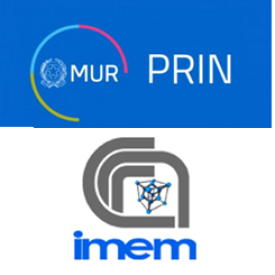This project aims at developing novel solar-blind photodetectors for UV-C radiation based on gallium oxide (Ga2O3, GaO) epitaxial films, with performance exceeding that of actual GaN, GaAlN and SiC detectors with filters.
The project includes two major activities:
1) Design and fabrication of novel solar-blind UV-C sensors based on epitaxial films of two less-studied GaO polymorphs with great potential: α (hexagonal) and ε (orthorhombic). Our preliminary study on ε GaO photoresistors confirm the potential of GaO and we wish to further push the technology by making use of self-powered hetero-junctions. Efficient self-powered diodes will make the photodetector suitable for use in remote places. The technological challenges include the general improvement of epitaxial materials and development of p-n heterojunctions via deposition of GaO on different p-type templates. Different solutions for ohmic contacts will be tested. The experimental activity will be supported by device modelling and simulations.
2) Material improvement is mandatory. The existing MOVPE system at IMEM-CNR will be upgraded in Spring 2022 with a new reactor purchased by Parma University. The new facility, together with deeper understanding of kinetic and thermodynamics of the chosen GaO phases, will allow to master the epitaxial growth and improve the material quality for fabricating photodetectors beyond the state-of-the-art.
In case of ε-GaO, efforts will be directed to eliminating the typical rotational domains and related columnar structures that limit the in-plane electron mobility. Elimination of domains is a major goal to enhance photocarrier collection and increase detection efficiency. Owing to its hexagonal lattice, α-GaO does not present this problem when grown on c-oriented sapphire or GaN.
Both polymorphs however contain deep intragap states that can absorb photons in the visible range, thus compromising the solar-blind operation mode. To understand the physical nature of these deep states and find ways to reduce their density is the second major goal of the material development. The third goal is to get a full control over phase nucleation and growth of the desired GaO UV-C absorber on different p-type templates in view of an optimal p-n heterojunction. Finally, we also plan Indium alloying of ε-GaO to modulate the bandgap width in view of specific application (for example hydrogen combustion).
Possible applications and motivation for this study:
i) Early detection of UV-C corona effects in power grid-lines and high-voltage components to prevent failures
ii) Monitoring the intensity and emission wavelength of UV-C radiation sources in hospitals, dental clinics, industry, food factories,
breeding farms, etc. (wavelength < 260 nm)
iii) Control of hydrogen combustion (light emission in the range 270 - 310 nm)
iv) Monitoring of solar UV-C radiation on the ground to estimate ozone reduction in stratosphere and UV-Index
*******************
Finanziato dall’Unione europea – Next Generation EU










